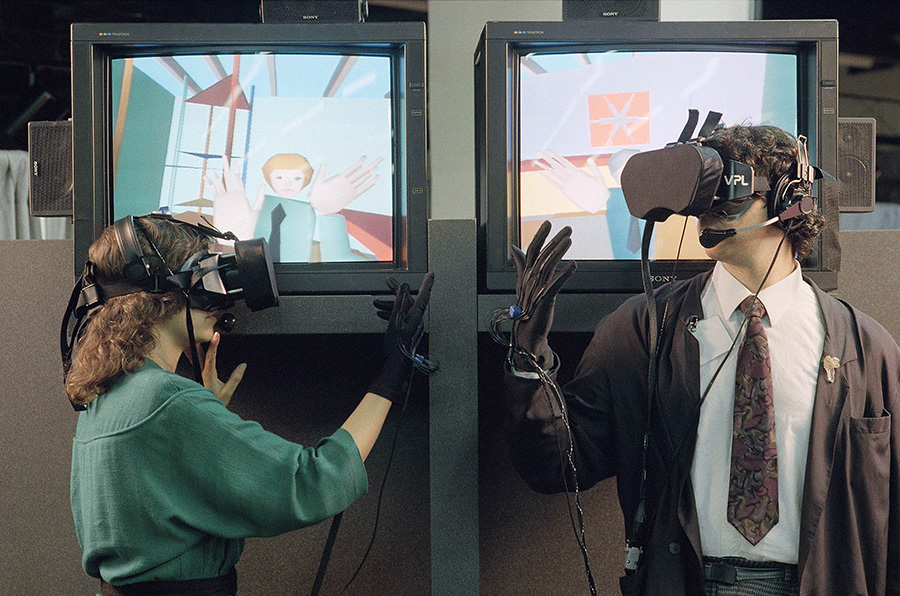22
In Strange Days, users of the wire had only to put on a slender skullcap, but in today's virtual
reality systems, the viewer must wear a bulky head-mounted display, a helmet with eyepieces for each eye (fig. 1.1). In other systems known as "caves," the walls (and sometimes the floor and ceiling) are themselves giant computer screens.
In Strange Days, users of the wire had only to put on a slender skullcap, but in today's virtual
reality systems, the viewer must wear a bulky head-mounted display, a helmet with eyepieces for each eye (fig. 1.1). In other systems known as "caves," the walls (and sometimes the floor and ceiling) are themselves giant computer screens.
Meredith Bricken (1991), an interface designer, writes that in a virtual environment, "You can be the mad hatter or you can be the teapot; you can move back and forth to the rhythm of a song.
You can be a tiny droplet in the rain or in the river" (372). All of these enthusiasts promise us transparent, perceptual immediacy, experience without mediation, for they expect virtual reality to diminish and ultimately to deny the mediating presence of the computer and its interface. Bricken's work is, in fact, entitled "Virtual Worlds: No Interface to Design."
Meredith Bricken (1991), an interface designer, writes that in a virtual environment, "You can be the mad hatter or you can be the teapot; you can move back and forth to the rhythm of a song.
You can be a tiny droplet in the rain or in the river" (372). All of these enthusiasts promise us transparent, perceptual immediacy, experience without mediation, for they expect virtual reality to diminish and ultimately to deny the mediating presence of the computer and its interface. Bricken's work is, in fact, entitled "Virtual Worlds: No Interface to Design."
 Log-in
Log-in Source type: picture
Source type: picture Source type: picture
Source type: picture Source type: picture
Source type: picture